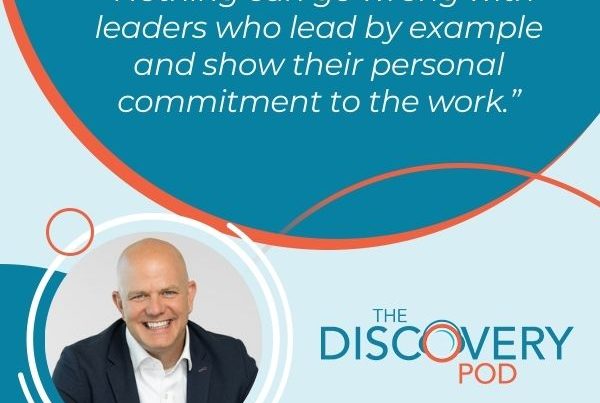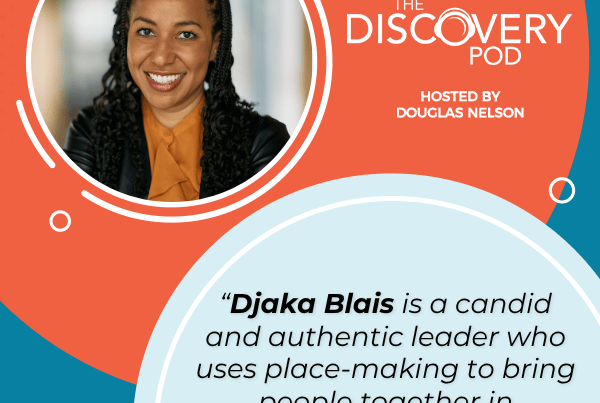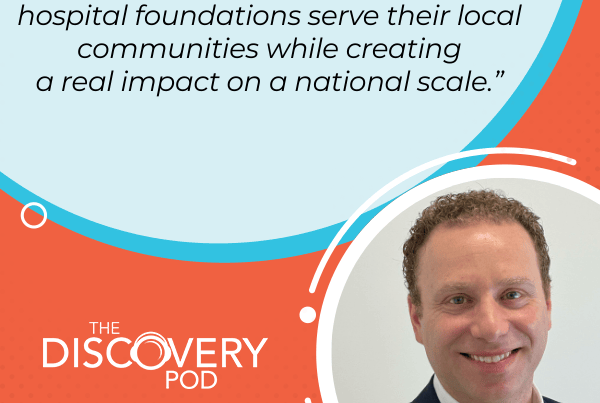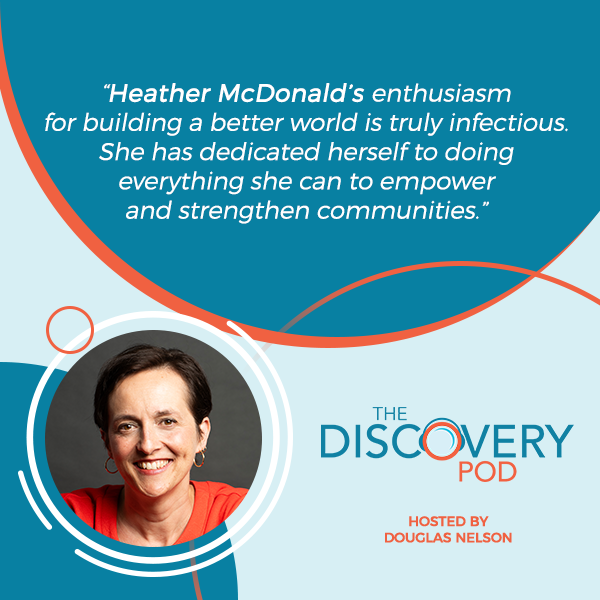
Heather McDonald recently stepped into her role as president and CEO of the United Way Greater Toronto, an organization focused on growth impact and operational transformation. In this conversation with Douglas Nelson, she shares how she balances their work as a solutions finder and her task of implementing new systems to integrate her values-based leadership. Heather also discusses her major takeaways as a second-time CEO, the importance of showing up consistently, and how she leads United Way in becoming a greater force for good in the Greater Toronto Area.
—
Listen to the podcast here
From Solutions Finder To Systems Change With Heather McDonald, President & CEO, United Way Greater Toronto
We’re joined by Heather McDonald, President and CEO of United Way Greater Toronto. Heather stepped into the role in the spring of 2025 to lead the organization’s ten-year strategy focused on growth, impact, and operational transformation. With over 25 years of experience in the social and human services sector, she brings a strong track record of leading change, building partnerships, and strengthening organizations.
She’s known for her values-based leadership, and it comes through in the episode. She’s also known for her commitment to building stronger, more equitable communities. In this episode, she talks about what leadership looks like at the level of the community, the role of convening, and the power of United Way as a force for good in Greater Toronto and well beyond. You’re not going to want to miss this episode with Heather McDonald.
—
Welcome to the Discovery Pod, Heather.
Thank you so much. It’s great to be here.
Heather McDonald Of United Way Greater Toronto
I’m looking forward to a great conversation. You’re someone who’s been a CEO for a number of years, but is relatively new to your current role at United Way Greater Toronto. Looking forward to seeing the differences, what you’ve learned already, and all the big sweeping changes you’ve got planned. Before we get into that, tell us and our readers a little bit about United Way of Greater Toronto and how you became the largest United Way in the world.
United Way Greater Toronto is working towards a more equitable GTA for all. The way they do that is by really building sustainable, transformative relationships that address systemic barriers and create lasting impact across the Greater Toronto Area. We’ve been around since the 1950s. It came together from a lot of different groups who cared about saying, “Let’s create a united way on how we’re going to help people.”
Through labor and different faith groups and communities coming together, they created this multi-faith group. It’s really beautiful, all coming together to say, “Let’s do this together.” A big way is United Way Greater Toronto fundraisers, a lot of money every year through our generous donors, generous corporate partners, municipalities, and employers who give money to United Way, as well as government partners to be for us to be able to do our great work. We can’t do it without our web of excellence around us, who are our partners, the government, our community partners, and the people in our community and our great region who help us do what we do.
From the outside, one of the things I’ve observed about your organization that is commendable is the way you’ve integrated being the second largest funder of social services in the province and being an actively promoting self-fundraising organization. There’s the seriousness and the earnestness of being a funder of social services, which is vitally important. Needing that enthusiastic, there’s a difference you can make in the community by telling that bigger story. As you’re coming into your role, how do you see balancing the two of those or putting them together, maybe?
There is an expectation that United Way Greater Toronto is showing up, not just as a connector or convener, but as a solution finder. There’s an expectation for our partners, from our donors, and our corporate partners, that United Way ought to be doing that. I’m here because it is so exciting that United Way has the platform to be able to do that and has access to all these incredible partners to be able to pull off big change. There’s this expectation from those who donate and support United Way Greater Toronto that we’re showing up in that way.
Our community is our residents in Peel, York, and Toronto who are expecting United Way to find that and support that philanthropic giving to have the desired impacts we all want to see in their communities. It’s an expectation from us, ourselves, and everyone around us. The platform that United Way has is just incredible in that it branches into provincial partners, municipal partners, deep local community connections, community agencies, as well as corporate and donor partners. Those partners, that web of excellence just doesn’t show up. It takes decades to build, and we ought to be using it to its full potential.
United Way’s Mission As A Solutions Finder
I like that phrase you just used, the solutions finder, the logical evolution of being the convener. What are the elements that you’ve seen in your time there as CEO of being that solutions finder? How does the organization show up as that solutions finder?
The first is a lesson I’ve learned a lot in my time. Here we go. I’ve been with the organization for ten weeks, so you got to bear with me here. I’ve been a United Way admirer for many years. I’ve seen United Way as an organization, actually received funding from United Way, and saw how they were with us. I saw how they provided grants, how they made our organization better, and how the grant-giving was lots of accountability, but also just a great support and capacity-building experience for us.
United Way first really listens. It listens to the community partners. It listens by talking to residents and communities who are most impacted through low income and health disparities in our wonderful regions. We are also informed by research, data, and our partners with academic partners to ensure there’s rigor to where we are investing and where we are investing our time to find those solutions in partnership with collective impact with those folks in communities.

Solutions Finder: United Way listens to its community partners, especially to low-income and underserved communities.
Our efforts are hyperlocal. This is the secret sauce that United Way has. It has the connections to understand that hyperlocal perspective. We spend time in the Golden Mile and talking to residents there. You must spend time and keep your ears open. Since the 1950s, United Way has created incredible advisors around them and rigor around research and data that uncovers blind spots. The convener role is one that it’s a very trusted organization and leadership here. My colleagues that work here are trusted and long-time partners. Through that relationship and trust, it lends itself well to convening, finding solutions, and helping make change happen.
It’s a wonderful model. I always have such admiration for leaders who start with “listen” as the, “What is the first step?” I’m curious when you’re listening and you hear from lots of different individuals, different people in the community, and different communities. You have a perspective that others don’t, which may allow you to jump to what the solution is faster than some of the people that are around your table or that you’ve brought to the table. How, as a leader, do you balance that? I think I know the answer, but you’re ahead of the people that are around the convening table.
That’s interesting because certainly, I’m not finding that ten weeks into the gig. It is a great perspective to have. Lots of different types of people can be attracted to this role. They have just hired someone like me, who’s run an organization that’s been funded. I’m coming in with a perspective of that I certainly know and understand, but there are so many questions that I have and things that I don’t know that it’s landed itself. I am not walking into any room thinking I know more than the people that I’m meeting with. What you do is there’s a humility that you need to recognize.
This is for me, where data and research and recognizing that the answers and services that are put in place in Mount Dennis will not serve Cooksville and will not necessarily serve the Chippewas of Georgina Island. You have to recognize that for collective impact to really be enacted and happen, there is no cookie-cutter answer. These are answers that are taking shape and moving forward based on the assets, the skills, the abilities, and the passions that those communities have. In that way, you never know the answer.
There is no cookie-cutter answer to the world’s problems. These take shape according to the skills, abilities, and passions of every community. Share on XYou never know the answer until the answer is arrived at.
It’s arrived at as a community. That’s invigorating, the differences that different models and different services that ideas that come out of communities. They know best. I remember I was hearing an interview with Anne Golden, who was a former CEO of United Way Greater Toronto. She said, “If you want to know where the shoe pinches, you talk to the person wearing the shoes.” That’s certainly true for United Way. They have incredible tables in all of these communities that took shape during the pandemic, but then have remained as these incredible gathering places for hyperlocal planning. They’ve just taken off in a new way that’s helped us move our mission forward.
Adopting To The Changing Donor Base
In my travels and my colleagues getting to work with organizations across the country and having worked with a number of United Ways across the country, there is this central role, solutions finder, convener that United Ways play in communities across the country. There’s also been such a significant disruption to the business model and the revenue model of United Way. A workplace campaign when no one went to the office in 2020 would have been challenging for all United Ways, all social profit organizations. How has your organization adapted to the changing donor base, the changing interests of the donors that support your organization?
It has been the steepest part of my learning curve since I started here. I would say United Way Greater Toronto, whereas other United Ways have seen a very steep decline in their workplace campaigns. United Way Greater Toronto continues to see 75% of our revenue come from that model. That’s an advantage of certainly being in a large city in Toronto, but fast-growing municipalities like Peel and York. There are certainly advantages just here around the population.
That also speaks to people way before me and way before the crew that are here working, that have just fostered incredible relationships and all of our cabinet chairs that are so dedicated. There has been, and we’re also seeing, more generational passing of the torch related to United Way fundraising. That is beautiful to see at a very large fundraising function to see someone who started it, then his son is now doing it, and then seeing that person’s son also at the gathering and meeting people. There’s some of that that has been a real strength. We’re seeing changes.
Workplace giving is certainly changing. I’m not trying that. That is something that’s on our radar for sure. We are looking at major giving and transformational giving. We have had incredible and generous donors. That is building right now. Again, what’s very fortunate is that because of our corporate partners and our workplace giving, there are some people who are sold on United Way in there. Those are often people who are becoming supporters of us on a transformational major giving way.
We’ve got our eye on this, no question. We have huge municipalities and the city relying on us to do so. As you said, we’re the largest funder of social services outside of government, so we have to show up. We’re watching this and continuing it, but we are seeing the trends that other United Ways are seeing for sure, given the size of our city. Workplace campaigns continue to be a big part of our revenue. We’re hoping that people are returning to work. We’re seeing some of that happening after the pandemic. I don’t know, but I wonder if that might have a positive impact on corporate giving when people are able to be at events and things that inspire giving, like they haven’t in the past few years. I hope that has a positive impact.
Boosting The Social Profit Sector
If you’re continuing to build those strong relationships, it can’t help but have a positive impact. One of the other things your organization has done particularly well, and even relative to other United Ways, though I’m not asking you to compare yourself to other United Ways, that’s impolite, is to shift the focus from the mechanism of giving, the workplace campaign, to that Any Way We Can campaign. That was focused on the specific issues that donors could make a difference or a meaningful impact on through their giving, spotlighting those areas of greatest need in the community, and showing how individual donations make a specific contribution.
United Way Greater Toronto is the radical hope that the Greater Toronto Area needs. That is something that when we look at opportunities for major giving and donor support, the incredible work our community services do needs profile and to be raised up. I was listening to Paul Alofs, who is a former CEO of Princess Margaret. He’s amazing. I was just watching a video, and he said, “Why do we call it the non-profit sector? Why do you define something by not being something?” I’m like, “Yes, this is speaking my language. I’ve been thinking about this for years.” He said it should be called the social profit sector.
I think about that message and how important it is for donors to understand what the fabric of the community and community services can do, the social profit related to prevention. People may stabilize in the hospital, but they get well where they’re living. It’s about how we prevent poor health outcomes, prevent homelessness, prevent these unfortunate outcomes, and also help people thrive and live their lives that they want in the community. That’s our social profit sector that we need to be investing in. It’s hard to get your arms around that sector sometimes because they are so many and different.
My job is to highlight and raise the social profit sector to help people understand what difference they’re making in the community. Donors are hungry for that information, learning, and understanding. It’s my job and United Way Greater Toronto’s job, along with our partners, to help communicate it. I’m glad that anything, any way we can, communication, and messages are resonating for you. We sure hope it resonates for others as well.

Solutions Finder: Donors are hungry for information about the social profit sector, and it is United Way Greater Toronto’s job, along with its partners, to help communicate it.
I can’t let this social profit conversation go. These are conversations with social profit leaders. We talk about it a lot with our clients. Part of the rationale is that the negative definition is rooted in scarcity. I am Canadian. I am not American. When we say we’re not for profit, we other ourselves and position ourselves in a place of scarcity. Scarcity drives so many of the challenges of our sector, related to leadership, sustainability, and the overall impact we can have on the community. With the idea of shifting, one of the things that appealed to me about the Any Way We Can positioning was, there are real problems.
It’s not sugarcoating it or pretending like there’s an instant solution to it. Here are the most significant challenges. We see them as challenges that can be overcome. The role of philanthropy is to give us the energy and the fuel in order to be able to do that with the community. It is shifting the narrative from scarcity, want, and lack to one of abundance and potential, without pretending that there’s not a problem that needs to be solved. It’s a very fine balance to strike. You and your colleagues have done an exceptional job of doing that.
There’s a word. It’s heliotropic. I think I heard that right. Flowers turn toward the sun. We all turn towards the sun. What you’re describing, Douglas, is so true, related to giving and inspiration. How do you work with our partners and donors and say, “It can be scary big problems. How are we going to tackle them?” It is that positivity, that any way we can, and that we are doing stuff. We are learning, doing stuff, pivoting if we need to, and moving it, but we are doing it any way we can. We’re not waiting for the conditions to be perfect. We are making the conditions.
That’s why it attracted me to this role. Donors are going to be attracted to that, too. I was talking to Ed Clark, long-term United Way Greater Toronto advisor and supporter. He talked about, “To plan is to choose.” That’s important, though, when you can be a lot and you are trying to eliminate poverty in Toronto, York, and Peel. That can feel like, “That’s humongous.” You do have to plan. To plan is to then choose because you only have a certain amount of finite energy resources. You may have massive ambitions, and we do, but ultimately, you need to plan.
That will make you choose how you’re going to spend your time. What difficult things are you going to try to fix? You do have to focus and try to move some of those things forward. That’s why United Way Greater Toronto has been really good, too. They said, “This is where we are going to support hyperlocal neighborhood solutions.” They have an exciting real estate strategy, as well as stabilizing and growing our social profit sector and their services. I just think they’ve said, “Here are our lanes because to plan is to choose.” You need to do that because you can’t do it all.
Becoming President/CEO At United Way
I’m curious about your journey a little bit. This is not your first rodeo. This is not your first opportunity to be a CEO of an organization. You were in the supportive community housing field for a number of years as CEO. You tripled the size of the organization that you were leading before joining United Way. What drew you to this position at the United Way, and say, “I want to go to the funding side. I want to make those big decisions.”?
I do have to say. I worked at LOFT Community Services and tripled the revenue, certainly team effort. I was incredibly lucky to have an incredible team and an incredible board. I got to shout them out there. Why move? I’d been at the organization for nineteen years. It was incredible learning and incredible work. I loved it. I knew that I didn’t want to work somewhere like it because I didn’t think I’d be as happy. I just loved what we were doing then.
There might be other organizations that are in that deeply affordable space, but I just loved where I was. There was one question I said, “Heather, you’ve done well here with your team at LOFT Community Services.” There’s this little voice in my back of my head saying, “Can you do something else? Could you? Would you still be able to do a good job somewhere else?” There’s a challenge, a little voice that was there in the back of my head.
I like a challenge. I liked United Way in that what I was doing where I was was life-saving work. I loved it. It felt sometimes like helping one person at a time, and an astounding, spectacular way to try to increase supportive housing units by this quantum. I just thought I wanted a platform that allowed me to have a bigger influence and change. When I talk about the web of excellence around the United Way, Greater Toronto, I believe that government partnership, the corporate, the donors, the research, and the community partners all working together is incredible. I thought this was the platform to enact my civic hopes and ambitions. That’s what attracted me.
The new stuff I would learn attracted me. I will tell you. The leadership and the people I’ve met here, and I would call it a United Way way, attracted me. You want to be around the people that are here. They have a good reputation. That’s not, and the reason was I was around, I saw that work. There were a lot of reasons why I was moving, but it felt like there had been a lot of new learning for me and a new type of business for sure.
A lot of it’s similar in that I know how to run an organization. Where I used to be, I have a lot more staff, but there are a lot more partners that are part of the United Way Greater Toronto family that you are embracing and working with here. It is a new type of challenge. I just thought, “I’m both feet in. I want to jump and try something new.” I always say, “You grow on the other side of comfort.” This felt just on the other side of comfort for me, and a good move professionally and personally.
Experiences Of A Second-Time CEO
You do not sound like a one foot on the cool deck and one foot in the pool kind of person at all in this conversation. I’m curious. At LOFT, you were an internal hire as you took on your first CEO role there. You had been at the organization. You moved into the role. Those are always interesting transitions. This one is very different in an organization of a broader scale and a broader coalition of partners. You’re the new leader coming in. Thinking back to that first day, putting your hand on the door, and pulling the door open, what was different about being a second-time CEO than being a first-time CEO?
The first thing, you’re so right to say, there is a profound difference from being an internal candidate to an external candidate because I walked in where I was, I knew the business, and I knew the people. There are all different challenges that come when you’re internal. That is a massive asset, which is why research indicates internal candidates do very well when they are moving into the role. They have a distinct advantage when you’re just looking at business continuity and growth.
I would say coming into this gig, I got some great advice. That was, “Be curious until you can’t be.” Just be curious. The team was very gracious. They knew someone was coming from outside. They had not had a CEO for several months. They were excited. They were thoughtful about what orientation I would need. I did clearly articulate what I would need before I came. “I got to need a lot.” I kept saying my steep learning curve. I use my arm, saying, “It’s steep. You need to understand that the purpose and the mission are so profoundly aligned with how I’ve lived my life, but how you deliver on it is new to me.”
Be curious until you cannot be. Share on XI’m sold on this mission. I’ve lived it and believe so. I have on-the-ground experience around the impacts of poverty, the impacts of systemic racism, healthcare, health outcomes, and all those things. This is new. When I met with the team, I just said, “I use the analogy of rocks of my time.” I don’t know if you’ve seen that. They have this YouTube video that they’re like, “You have a jar. You fill it all with sand, which is all those emails and back and forth that you don’t ever get to your big rocks.”
I use that analogy when talking to the team. I said, “My big rocks are to meet with people for whom it would matter to meet with the CEO of United Way within their first few weeks, and for whom it matters a lot to us at the United Way Greater Toronto. That means a lot of the other stuff. Please know I believe in it. I am so interested in learning about that, but this is the priority for now. This is the rationale.” The team was very graceful around that and understood to set us up and to meet the people we needed.
For me, the focus is that this is an organization that runs massively because of through and with relationships, so I need to build those and start investing in them immediately. That was tough because a lot of learning needs to happen with those relationships. Those are face-to-face. The team is then saying, “You’re meeting with Douglas. Here’s what’s important to Douglas. This is the relationship we’ve had with Douglas.” They’re then having to prepare information for someone like me, who’s asking, “What does this term mean? What does this acronym mean?”
At the same time, you don’t have to do that for an internal candidate. They had had, at United Way Greater Toronto, people who had been internal for quite a long time. It was a huge amount of effort on this for the staff. They were amazing. They continue to do that. I continue to be open. I don’t pretend what I don’t know. “I don’t know that acronym. Why is that? I know you’ve told me this twice already. I am so sorry. Can you tell me again?” They’ve been graceful about it. It is different.
I would say another big change is not so much being internal, and then coming in from the external. The change was being a new CEO versus someone who had experience as a CEO. I would say this time around, there’s a confidence. I would say when I first became CEO, all I wanted to do was convince them that they made the right decision. That’s not just the board. I’m talking about clients and staff, and it’s certainly the senior team. I want them to know that they made the right call.
Sometimes, that can have you do things that aren’t pacing things right for you and not pacing things right for the organization. There’s insecurity that comes from being a new CEO and learning as much as you can. I’m grateful for the experience of coming into this situation because there is a confidence I have about pacing. There’s a confidence I have around governance. There’s a confidence I have in my abilities. That doesn’t mean I’m not learning. I am making mistakes, but there’s a confidence that I trust myself a lot more, having been a CEO for many years. That is a big difference.
I want to underline something you said for our readers that is valuable. A lot of our readers are people that are in those ED or CEO roles and may be looking to another role, or people who are ready to take on that ED or CEO role for the first time. You said when you were coming into the organization, you were really clear on what you wanted to prioritize in your orientation. That’s what particularly first-time CEOs, especially if they’re coming from the outside, have a hard time doing.
The value of saying, “This is what I think is most important. This is where I want to spend my time in the first couple of weeks in the first month,” gives so much guidance and comfort to the team that you’re coming in to lead. Hearing you say that so clearly is worth noting that is incredibly valuable for people coming in as CEO to be able to articulate, “This is what I want to prioritize in my first month.” You can’t do it all.
It is also recognizing that it does impact people who are doing amazing stuff. They are maybe making critical decisions that they want your feedback on. It is important to balance that message to tell staff over and over, “This is what I’m focusing on, here’s why. I am so interested in what you’re doing here. I can’t wait to dig into it. Please know I am sorry I’m not able to give the attention. I’ll get there.”
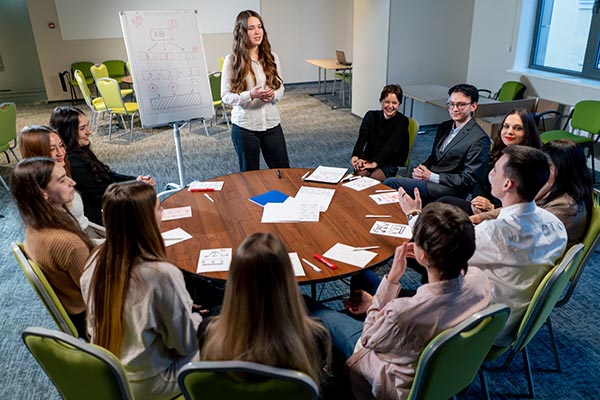
Solutions Finder: You cannot do everything on your own. Recognize that people around you are also creating an impact and making critical decisions.
You do need to get there and get there thoughtfully, not, “Just start looping me.” It’s like, “No. I want to learn about this now. Thank you so much,” or “We are going to learn about this deeply in August. I’m looking forward to that.” Follow through on it because their work is important. That has been a bit of a challenge that people have been understanding, but I’ve made efforts to make sure I’m communicating that.
You can do anything. You can’t do everything in your first month. It is being able to prioritize that and send that signal before you put your hand on the door for the first day, because it is incredibly valuable for CEOs. It sets you up for setting expectations for the team around you and also helps you resist the urge to try to do everything all at once.
The other thing I asked was for packages from each senior team member to help me orient myself. I knew this because I was departing a CEO gig, so I was preparing the CEO who was coming. I said, “This is what I’m preparing. I’d like this, too.” It’s not, “Write me a 50-page report.”
Please don’t.
It’s just like, “Tell me a bit about yourself. Tell me about the team. What are your top five things you’re working on? If I wanted to get in and see some of the most important documents related to your important stuff that you want to share with me, where would I find them?” An org chart is probably really basic, just enough to get me a bit and to understand their main scopes of work. It was about six PowerPoint slides or something, nothing fancy, but it helped me get my feet under me when I came. It helped focus the senior team members on how do I best prepare for this person we don’t know, an outside candidate. It was helpful. I still go back to those short, easy-to-understand PowerPoints, so that was very helpful.
Where they didn’t use all the United Way acronyms?
No acronyms allowed. It was great. They’ve been good. I’m playing with language but still learning. I’m like, “This place is awesome.” They have internal campaigns. I’m hacky-sacking in front of the staff like it’s a fun place. I’ve had some surprises. I pretty much haven’t had any surprises of, “That’s not good.” I’ve had more delightful surprises around the way they work together and going, “That’s what an internal campaign is. Happy to understand that.” They’ve been terrific.
Showing Up Consistently During Tough Situations
One of the things that I’m curious to get into, and we’ve been talking a lot about leadership and showing up as a leader, is the idea of the reputation you build as a leader over time. Being relatively new in your role, I’m sure you’ve been thinking about that again. What is the reputation? How do you approach that as a CEO coming in, and this is what you can expect from Heather on Monday, Tuesday, Wednesday, Thursday, and Friday?
When you asked me that, I immediately went back to the pandemic. For me, during the pandemic, when you think about reputation, I thought to myself, “How I lead through this will be such a big part of who I am and how I remember my career.” I felt so frightened, honestly. At the beginning, I’m like, “Are our staff at risk for their lives?” We had a staff with a newborn at home. I think about that. What we did with my incredible colleagues was determine principles and how we would navigate the pandemic. They were easy to come up with, but they really helped, and we went back to them.
We are going to be unafraid to move first. We are going to really consider the entire person, not just the staff, their family, loved ones, and home life. We’re going to deeply understand what’s happening in communities and neighborhoods where our staff and clients live. We will relentlessly do what’s right. There are just a few principles. I wrote a card to every staff who tested positive for COVID. I wrote them a personal card saying, “I’m so sorry you’re not well. I hope you have a speedy recovery. Your organization is here to help you if you need anything. Here’s myself.” If you can imagine, I have many sent out. Only one staff wrote back, called, and said they needed groceries. They lived alone, and they were unable to get groceries.
I was able to do that. Just for us as leaders, our staff knew that we would be there for them that way. How does Heather show up? I have my principles. I have principles that I say over and over to staff that they will know how I will be and how I’ll navigate tough situations. One of them I’ve mentioned earlier in talking to Douglas is to plan is to choose. I do believe in planning. I believe in people being able to be creative, use their best judgment, and work with autonomy. To do that well, you need to plan.
You need to know what everyone is working on. Have that shared understanding. You need to have that structure to enable people to be free within that structure to be creative. That’s a big thing. I’m unafraid to make unpopular decisions, but I will always say, “You will understand why.” I am so thoughtful. You will have an opportunity to contribute. I will always accept if I’ve made a mistake. We will see after a period of time if this did not have the desired outcome we wanted. I’m very optimistic all the time, but I do believe in resiliency. I take care of myself, and I believe in other people doing that as well.
I just have basic principles around leadership, and then I go back to them. It’s never failed me when you’re saying what is right. It just sounds so simple, but what is right? Right by our donors, right by the communities we want to serve and the people we serve, and right by the staff. It doesn’t fail you. You will do what might be hard, tough, and unpopular as long as it’s right. I hope that people will think of that when it comes to me.
The other is that I always give credit. I give credit to people. I’m always someone that will give credit where credit’s due, and I believe in building people. That’s a little bit about myself. I hope people learn to expect that. If you are showing up in that way, all decisions and all the partners, you are the same. You’re consistent. Over time, they’ll get to know me here that I’m very consistent that way.
To have taken the time to think through what those principles are says a lot about you as a leader. It’s great advice for any of our readers thinking about their leadership journeys. What are the principles that animate how you show up every day? We’ve all probably all had the experience of working for someone who was somewhat inconsistent, how they showed up, whether in principles or just their mood, and how challenging that can be. How reassuring and confident it can make you if your leader is showing up consistently.
Would you want to work with or for you? You go to ask yourself that question. If the answer is no, do not be a leader because you’re not going to attract great people. Great people can go anywhere. Would you want to work with and for you? If the answer is no, then change or move on because you’re not going to attract great people. You do not make big changes happen alone. You want to be the boss you would want, honestly.
Ask yourself if you want to work with and for yourself. If your answer is no, do not be a leader. Share on XExploring New And Exciting Solutions
Heather, my favorite question, and I’m particularly excited to ask you this, given how our conversation has gone to date, is what are you looking forward to?
I’m looking forward to digging in more to these incredible solutions that United Way Greater Toronto has developed with partners and seeing those scale and spread more broadly in such cool ways. They’re doing a project around inclusive employment opportunities, local employment opportunities with corporate partners, which you don’t see all the time. These corporate partners are so engaged in creating employment opportunities. It’s meant $12 million returned to this community. It is incredible stuff. I can’t wait to be part of scaling, spreading, and, to our point earlier, Douglas, catering these collective impact opportunities and communities.
I’m excited about that. I’m excited to see this web of excellence around United Way Greater Toronto change and come together around certain initiatives, leveraging some of my great relationships with government. They do amazing work, but often really need someone to help be a connector and steward around some of these relationships. I’m looking forward to seeing how I can help there. I’m someone that loves getting out there. I am looking forward to getting out there, visiting, and getting to know more of our communities in Peel, York, and Toronto. Those are some things I’m looking forward to, but I have just my steep learning curve, and I’m loving it.
Your enthusiasm is infectious, as is your optimism. Heather, thank you so much for making time to be on the Discovery Pod.
It was a pleasure, Douglas. Thank you so much.

